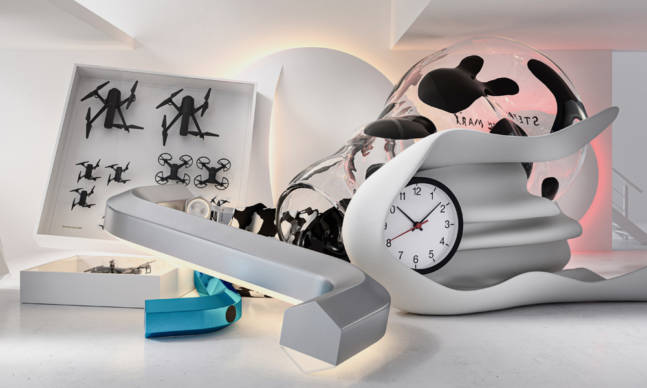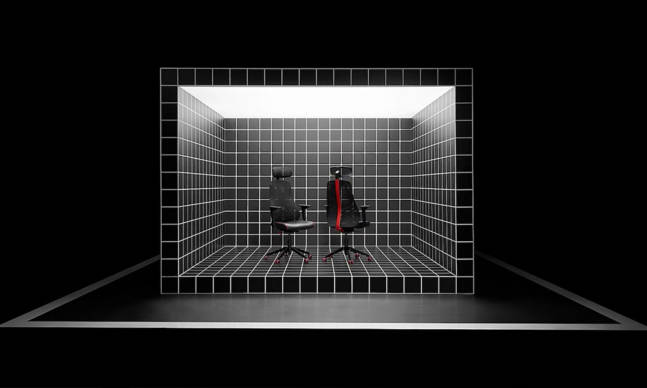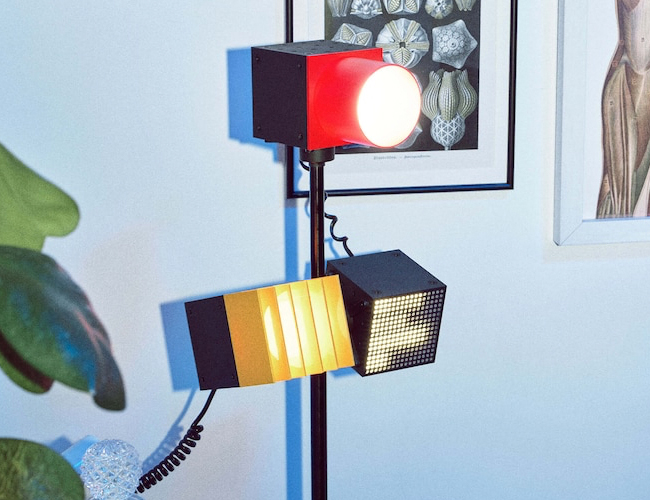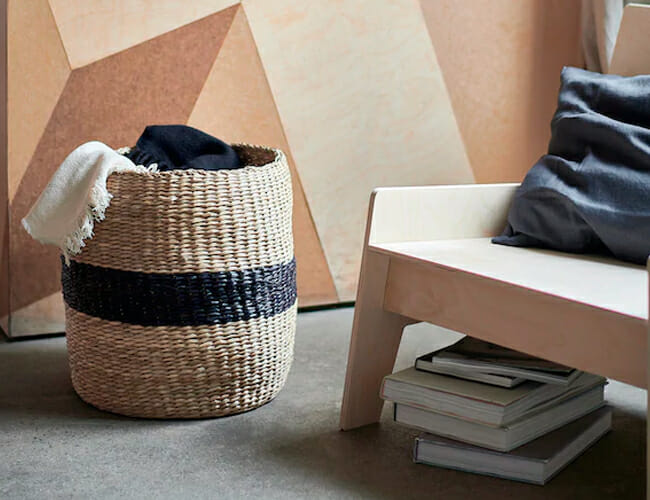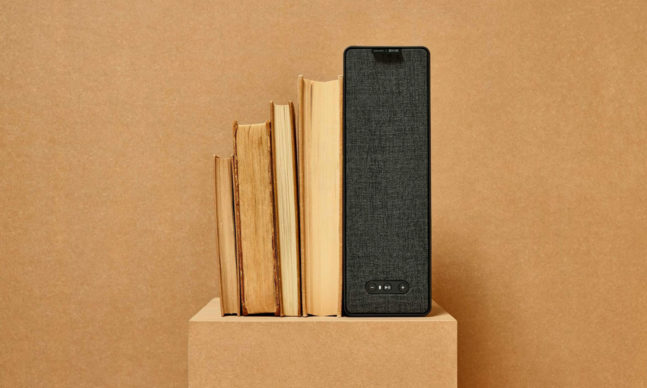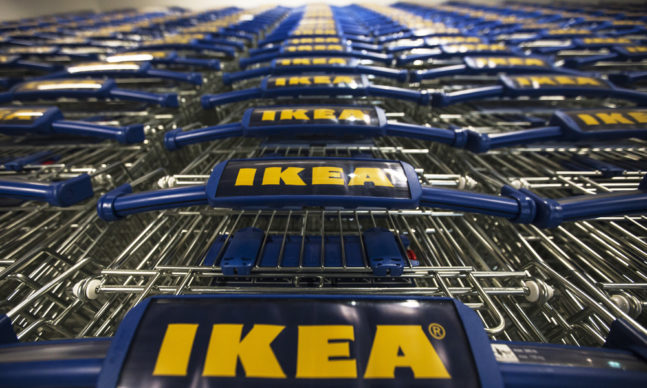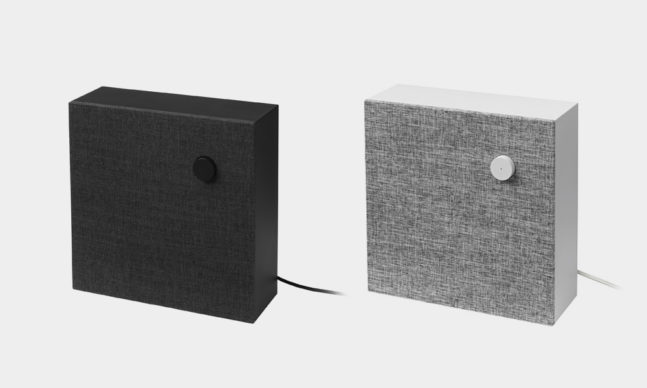This definitive guide to the best sheets of 2018 answers everything you need to know to buy better bedding this year. We tested different 31 different sets to find the best sheets for every type of sleeper, at every budget.
Prefer to skip directly to the picks? Click here.
The Short List
Best Overall Value Sheets: Authenticity 50 Percale Sheet Set

Extra-long staple Supima cotton is the crème de la crème in the cotton world, but you typically have to spend half a month’s rent to the real-deal stuff. Not so with Authenticity 50’s absurdly well-reviewed Supima percale weave sheets. Made completely in the U.S. (“seed-to-stitch,” the website notes), these sheets were our runner-up for best overall percale sheets due to a body that’s light enough to stay cool in the summer, but not so light you’d need to change them in the winter. You’ll be hard-pressed to find the same mixture of craftsmanship, materials and company-wide transparency for less than $200 — and these start at $139.
Best Percale Sheets: Boll & Branch Percale Solid Sheet Set

Boll & Branch’s percale sheets are stellar. They launched in April of this year, and out of the mountain of percale sheets I tested, this set stood out for a couple of reasons: The sheets are a bit airier than the company’s signature sheets, which are made for a cooler (but still cozy) sleeping experience. The percale sheets are made using a plain weave (one-under, one-over) with the brand’s signature organic long-staple cotton, and utilize two very fine plys (layers) that give structure while maintaining maximum breeziness. My partner sleeps hot, I sleep cold and we both agreed these were the best-feeling percale sheets, regardless of the weather outside.
Best Linen Sheets: Rough Linen Sheet Set

I actively tried not to succumb to Rough Linen’s rabid and growing fanbase, but I couldn’t help it — its linen sheets are what dreams are made of: they’re airy, tough and textured. Rough Linen’s sheets arrive slightly stiff (as most traditional linen does) and grainy but soften rather quickly with use and washes. Though some commenters online warned it might take months to soften, I found the sheets significantly softer and more flexible after only a few stints in the laundry machine. I was also happy to find that they weren’t waxy or coated in anything that would cut down on linen’s natural texture. Rough Linen’s sheets are sewn by hand with their Smooth line of linen, which uses a tighter-than-usual weave, making it feel much sturdier than the other brands I tried. At $360 for a queen set, they’re certainly an investment, but their textured-but-not-scratchy feel combined with a durable body and just a damn good-looking bed make them the best of the bunch.
Best Sateen Sheets: Cuddledown Hotel Sateen Sheet Set

It seems everyone on the internet has crowned Cuddledown’s (try and ignore the name) 400-thread count sateen set the champion of sateen. I should note that sateen is not my favorite bedding material — far from it — but for those who take to the buttery softness, heavier, warmer feel and an admittedly gorgeous sheet drape, Cuddledown is pretty damn great. These sheets are made with length to spare (a feature to accommodate all mattress heights), and they proved themselves to be absurdly wrinkle-resistant. The long-staple cotton used makes for a sheet that won’t wear out as quickly as most sateen sets.
Best Sheets Under $50: Target Threshold Organic Cotton Solid Sheet Set

This one wasn’t even close. Target’s hyper-affordable Threshold-branded sheets easily outclassed the likes of Amazon’s best-selling Mellani sheets, the AmazonBasics line itself, two sets of sub-$50 Walmart sheets and two IKEA sets.
Cheap sheets make their cheapness known in a variety of ways — some show lousy stitching and begin to fray after one wash; some arrive with an off-putting chemical smell; others simply feel crappy to lay on. The Threshold sheets set themselves apart by retaining the basic reasons you’d buy a percale set in the first place — they’re crisp, cool, easy-to-clean and reasonably moisture-wicking. And at less than $45 for a queen set and no weird chemical smells, there’s little to no competition at this price point.
Introduction
B
uying decent sheets is confusing, and almost laughably so. What is sateen? Someone told me thread count doesn’t matter anymore — is that true? What in the world do plys mean, and why are there staples in cotton?
All fair questions, and all the result of a decades-long practice by brands bamboozling customers in hopes they’d just buy bedding without thought. Luckily, the reign of the thread-count scammers and quality skimpers is ending. In their place: a wave of direct-to-consumer brands that skip out on distribution and stocking costs in favor of materials and craftsmanship. And with them, mega brands, too, have become at least a bit more honest about their affordable offerings.
Over the course of a few months, I slept on 31 different sheet sets to find out which ones do their job the best. My most important piece of advice to shoppers: buy sheets for you. Sleep hot? Skip sateen. Prefer crispy hotel sheets? Check out the percale selections, and so forth. If neither of those things makes sense to you, fear not; rounded up here is all the bedding jargon you’ll need to know before you get your next set.
How to Make Your Bed Like a Navy Seal

The secret to a crisp — and clean — bed? The humble hospital corner. Read the Story
Important Terms to Know
Percale: Also called a plain weave, percale is a balanced weave pattern where yarn is typically threaded in a one-under-one-over pattern. Percale is not a material, though it is nearly always used in reference to cotton sheets. Percale sheets are typically lighter weight, crisper, affordable and matte (read: not shiny). Because of this, percale is the most popular sheet type by a significant margin.
Sateen: Not satin. Known for its luxe smoothness, wrinkle-resistant qualities, and a dulled shininess, sateen sheets are also almost always made of cotton, but bear different attributes than percale. A sateen weave is a tight, unbalanced weave, with more vertical threads than horizontal, making it heavier feeling on the body and limiting airflow more than percale sheets do. Sateen sheets sleep warmer than nearly every other sheet type and material for this reason.
Linen: Made from the flax plant, linen is woven much more loosely because its threads are typically much larger. This gives linen its trademark airiness. But linen is not necessarily lightweight — it’s typically heavier per square inch than sateen or percale cotton, and, due to natural properties the flax plant possesses, is the superior moisture-wicking textile. Linen sheets are often pricier than sateen or percale due to a more involved manufacturing process and lower supply of materials (spoilers: we use more cotton than flax).
Staple: Not what you bind paper together with. A staple signals the length of the cotton fibers used to make the sheet — the longer the staple, the longer the thread, which in turn means fewer threads are needed, creating a more durable fabric that produces less lint. Around 85 percent of cotton produced is short staple, with the remaining 15 percent being long and extra-long staple. Thus, the longer the staple, the higher the quality and cost.
Ply: The number of yarns in each thread. Some sheets will call their constructions two or three plies — this means there are that many yarn strings woven into each thread that makes the sheet. More plies typically means a more rigid, denser construction, which can create the “crisp” feeling you’ll see sheets described with.
Thread Count: The measure of total threads present in a single square inch of sheet. This number is calculated by adding horizontal and vertical threads. Thread count is one factor in determining sheet quality, but can be manipulated by using finer threads or using multiple plies and artificially doubling (or tripling) thread count.
Pilling: Occurs when the ends of fibers become frayed and tangled, picking up dust, lint and other frayed fibers. If a pillow or sheet looks and feels fuzzy, that’s likely pilling. Pilling occurs more regularly when shorter staple cotton is in use, as it’s easier for them to come undone.
Frequently Asked Questions
What’s the Best Thread Count?
“Pumped-up numbers with inferior, multi-ply yarn, the [thread count] numbers are often lies to begin with. A higher thread count doesn’t equate to better quality. Stay within the 200- to 300-range and you’ll be good,” said Jimmy McDonald, cofounder of Authenticity 50.
Every sheet maker we spoke with echoed a similar sentiment. Thread count just isn’t a good measure of quality as a standalone figure, apart from exposing sellers who are (probably) trying to rip you off. If you see any sheets above with a thread count of 500 or above, regardless of material or weave, feel free to take that as a big red sign that says “bullshit.” There’s only so many threads you can squeeze into a square inch of fabric, so these higher thread counts are either adding plies to their sheet and counting those as double or artificially weaving in more threads, which is only going to make for a hotter, heavier sheet anyway.
What’s the Difference Between Percale and Sateen?
The vast majority of people sleep on percale — it’s crisp, cool and versatile. Its balanced weave allows air to flow through the sheet, and allows the sheet to stack in areas and “float” above the skin, creating more avenues for air to keep you cool.
Sateen isn’t without its own strengths, though. Its predominantly verticle, unbalanced weave gives it less rigidity than percale, allowing it to fall and drape on a bed more attractively than other weaves. It’s a better choice for people with significantly more sensitive skin, as it’s much smoother to the touch than other popular bedding weaves and materials.
Sateen’s downsides pertain to durability and its knack for insulating too much heat. The imbalanced weave of sateen makes it more likely for pilling, sheen loss and tears to occur, so it will typically show wear more quickly. The weave is also responsible for a detracted airflow, meaning you’ll be warmer than you would be under percale.
What Is “Egyptian Cotton” and Why Does the Type of Cotton Matter?
Egyptian cotton is probably the most famous type of cotton, and rightfully so — real Egyptian cotton is extremely long-staple cotton that can be wound into a long, tight and soft yarn that makes for durable, cozy textiles. Unfortunately, odds are the sheets you bought, even if they say they’re made with Egyptian cotton, aren’t.
Truth is, there aren’t many good ways to determine if a set of sheets is using all real Egyptian cotton, as brands often use a trace amount to claim it as a marketing tool (you can reference this website, but very few brands are registered).
Supima cotton is an American-grown variety of true Egyptian cotton, and fabric must be certified by the American Supima Association to call itself Supima (find an updated list of brands that use Supima here). Most premium brands will use one version or another of long or extra-long staple cotton, which is a good indicator the company is using quality materials. As noted above, the longer the staple, the greater the fabric’s durability. It’s also useful to check for a GOTS certification to make sure you’re getting sheets made without any toxic materials and in an ecologically-friendly way.
Why Does Linen Feel Scratchy at First?
While all percale and sateen sheets are made from cotton, linen is made from flax, which is a different beast altogether. Where cotton is extracted in a fluffy ball called a boll, the fiber used to make linen is a bast fiber that more resembles what you’d expect from a plant product. Bast fibers are taken from the core of the flax plant, and, as such, are not fluffy or pleasant initially — but their tensile strength is naturally higher than cotton.
The roughness of linen sheets when they ship to your home isn’t indicative of their quality — you have to give linen time to break into its charm. Softer qualities are brought out over time through wash and wear. A good rule of thumb with linen (and all sheets, really) is to give it a good wash right when you get it to start that process.
Buying Guide
Best Overall Value Sheets: Authenticity 50 Percale Sheet Set

Verdict: Extra-long staple Supima cotton is the crème de la crème in the cotton world, but you typically have to spend half a month’s rent to the real-deal stuff. Not so with Authenticity 50’s absurdly well-reviewed Supima percale weave sheets. Made completely in the U.S. (“seed-to-stitch,” the website notes), these sheets were our runner-up for best overall percale sheets due to a body that’s light enough to stay cool in the summer, but not so light you’d need to change them in the winter. You’ll be hard-pressed to find the same mixture of craftsmanship, materials and company-wide transparency for less than $200 — and these start at $139.
Best Percale Sheets: Boll & Branch Percale Solid Sheet Set

Verdict: Though not the sheets that made it famous, Boll & Branch’s percale sheets are stellar. They launched in April of this year, and out of the mountain of percale sheets I tested, this set stood out for a couple reasons: The sheets are a bit airier than the company’s signature sheets, which are made for a cooler (but still cozy) sleeping experience. The percale sheets are made using a plain weave (one-under, one-over) with the brand’s signature organic long-staple cotton, and utilize two very fine plys (layers) that give structure while maintaining maximum breeziness. My partner sleeps hot, I sleep cold and we both agreed these were the best-feeling percale sheets, regardless of the weather outside.
Best Affordable Percale Sheets: Target Threshold Organic Cotton Solid Sheet Set

Verdict: This one wasn’t even close. Target’s hyper-affordable Threshold-branded sheets easily outclassed the likes of Amazon’s best-selling Mellani sheets, the AmazonBasics line itself, two sets of sub-$50 Walmart sheets and two IKEA sets.
Cheap sheets make their cheapness known in a variety of ways — some show lousy stitching and begin to fray after one wash; some arrive with an off-putting chemical smell; others simply feel crappy to lay on. The Threshold sheets set themselves apart by retaining the basic reasons you’d buy a percale set in the first place — they’re crisp, cool, easy-to-clean and reasonably moisture-wicking. And at less than $45 for a queen set and no weird chemical smells, there’s little to no competition at this price point.
Best Linen Sheets: Rough Linen Sheet Set

Verdict: I actively tried not to succumb to Rough Linen’s rabid and growing fanbase, but I couldn’t help it — its linen sheets are what dreams are made of: they’re airy, tough and textured. Rough Linen’s sheets arrive slightly stiff (as most traditional linen does) and grainy but soften rather quickly with use and washes. Though some commenters online warned it might take months to soften, I found the sheets significantly softer and more flexible after only a few stints in the laundry machine. I was also happy to find that they weren’t waxy or coated in anything that would cut down on linen’s natural texture. Rough Linen’s sheets are sewn by hand with their Smooth line of linen, which uses a tighter-than-usual weave, making it feel much sturdier than the other brands I tried. At $360 for a queen set, they’re certainly an investment, but their textured-but-not-scratchy feel combined with a durable body and just a damn good-looking bed make them the best of the bunch.
Best Affordable Linen Sheets: Brooklinen Linen Core Sheet Set

Verdict: Linen sheets are notoriously expensive, so “affordable” is relative here. Starting at $229, Brooklinen’s set is as airy as you’d want it to be, but the weave isn’t too loose either, as was common in testing cheaper linens. When compared with the other linen sheets I tested, the Brooklinen set was significantly softer from the get-go (other than Parachute’s garment-dyed set). The low cost, less aggressively-textured feel and a great variety of colors make Brooklinen’s set a rock-solid linen starter set.
Best Sateen Sheets: Cuddledown Hotel Sateen Sheet Set

Verdict: It seems everyone on the internet has crowned Cuddledown’s (try and ignore the name) 400-thread count sateen set the champion of sateen. I should note that sateen is not my favorite bedding material — far from it — but for those who take to the buttery softness, heavier, warmer feel and an admittedly gorgeous sheet drape, Cuddledown is pretty damn great. These sheets are made with length to spare (a feature to accommodate all mattress heights), and they proved themselves to be absurdly wrinkle-resistant. The long-staple cotton used makes for a sheet that won’t wear out as quickly as most sateen sets.
Best Affordable Sateen Sheets: Target Threshold Organic Cotton Sateen Sheet Set

Verdict: Similar to the budget percale category, there isn’t much competition here. Target’s sateen offering blew other similarly-price sateen sheets out of the water in softness and looks. In fact, apart from a bit less natural wrinkle resistance, they were on par with the Cuddledown sheets. The biggest marks against them pertains to breathability, where they’re easily eclipsed by more premium options. But for less than $50 for a set, not everything can be perfect.
Best Sheets for Hot Sleepers: Snowe Percale Sheet Set

Verdict: Incredibly crisp and light. These long-staple Egyptian cotton sheets are assembled and finished by hand in Italy and feel like air conditioning you can wrap yourself up in. Snowe’s sheet, which comes in a very handsome ash grey (among other options), narrowly outperformed the likes of Alterra Pure, Boll & Branch and Coyuchi for this spot by way of a lighter, crisper body and a generous 90-day test-and-return policy (free shipping on purchase and return). My partner nearly always sleeps on top of the sheets — not with these.
Best Sheets You Can Buy on Amazon: Perú Pima Percale Sheet Set

Verdict: Frankly, buying sheets on Amazon is annoyingly tedious. The all-caps descriptions are fluffy, figuratively speaking, and there’s virtually no way to reprimand brands that try to bullshit you. The “Pima” cotton these sheets are made from is not Supima-certified, but it is extra-long-staple cotton nonetheless — and for a really, really solid price at that. Perú Pima has been making these sheets for quite some time, too, and has its own website that’s manned by people who respond to customer service requests. These sound like low bars to hop, but Amazon may very well be the biggest remaining offender in the old bedding-misinformation scheme.
Best-Looking Sheets: Coyuchi Organic Crinkled Percale Sheets

Verdict: Like a well-plated dish can make food taste better, a bed that calls us to it makes sleep better. Coyuchi’s crinkled percale product uses a proprietary low-thread-count weave to create these lightweight, “worn in” sheets. The lower thread count makes them exceptionally airy, yet still heavier on the body — almost like a linen sheet might feel. Pair the sheets and pillowcases with Coyuchi’s traditional percale duvet cover for the coziest, most-photogenic bed imaginable.
Best Eco-Friendly Sheets: Alterra Pure GOTS-Organic Cotton Percale Sheet Set

Verdict: Yes, they’re comfortable, too. Alterra Pure’s percale was the runner-up to Snowe’s percale in “Best Sheets for Hot Sleepers.” The sheets are wonderfully light, but they’re also the most responsibly raised of any I tested. Alterra uses only recycled and reused water during production and emits a whopping zero gallons of wastewater during production. These 100 percent organic cotton percale-weave sheets are made from Fair Trade-cotton bought from farm co-ops that Alterra Pure works with on various sustainability projects. The materials are GOTS-certified and even produced in an eco-friendly, LEED-certified factory.
Not Recommended
AmazonBasics Sateen Sheet Set
Though reasonably well-reviewed on Amazon, AmazonBasics’s sheets aren’t worth the bother. The microfiber set is 100 percent polyester, and it began pilling after two washes. It was also a bit suffocating compared to others in the affordable price bracket.
Mellani Brushed Microfiber Sheet Set
I had high hopes for these sheets, which are among the best-selling on Amazon. Even though the microfiber sheets were lightweight, they didn’t allow for much airflow. The set I ordered arrived with threads already coming apart, a defect amplified after one wash.
IKEA ULLVIDE Cotton-Lyocell Sheet Set
The IKEA ULLVIDE set I tested wasn’t particularly poor, but the ULLVIDE is a single-ply, 200-thread-count sheet using a short-staple cotton-lyocell blend. To translate: it’s more than likely going to wear down. And fast.
L.L. Bean Pima Cotton Percale Sheet Set
Named the best percale sheets available by Wirecutter, these sheets are very, very good for the price, but they didn’t best Snowe’s percale in cool, crispness and they aren’t nearly as affordable as Target’s Threshold percale set. They also fell just short of Boll & Branch and Authenticity 50’s percale sets in soft-crisp balance. I also wasn’t able to verify the material as legitimate Supima, where Authenticity 50’s was.
Parachute Linen Sheet Set
Parachute’s linen sheets occupied much the same space L.L. Bean’s percale set did — very good, but just in between superlatives. A full linen set (fitted sheet, top sheet, pillowcases) from Parachute runs $279 for a queen, where Brooklinen is $30 lower, and I didn’t notice much difference between sleeping, washing and construction. I preferred Rough Linen’s durability and look over it as well. Parachute’s percale sheets performed well early on but lost a bit of crispness after a series of washes.
Snowe Sateen Sheet Set
While the percale sheets were great for keeping cool, I found the sateen sheets were a bit too warm, even for sateen. They’re also not quite as lustrous as the Cuddledown sheet and cost significantly more than Target’s Threshold line.
Rugs Don’t Have to Cost an Arm and a Leg — These Six Are All Under $1,000

Rugs are inexplicably expensive. Yours doesn’t have to be. This selection of six rugs runs the gamut of material and pile, but doesn’t breach the 4-digit deathtrap. Read the Story


